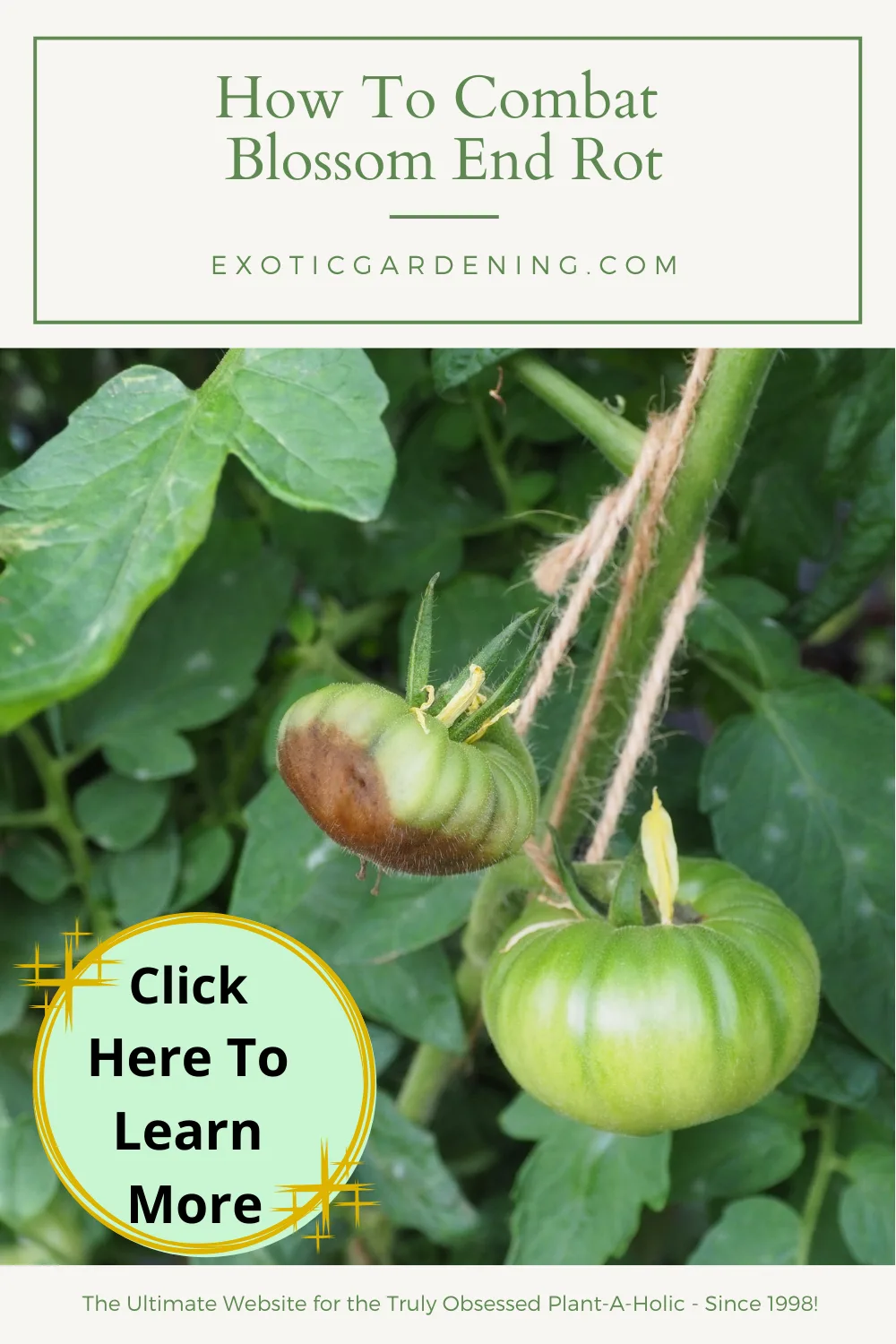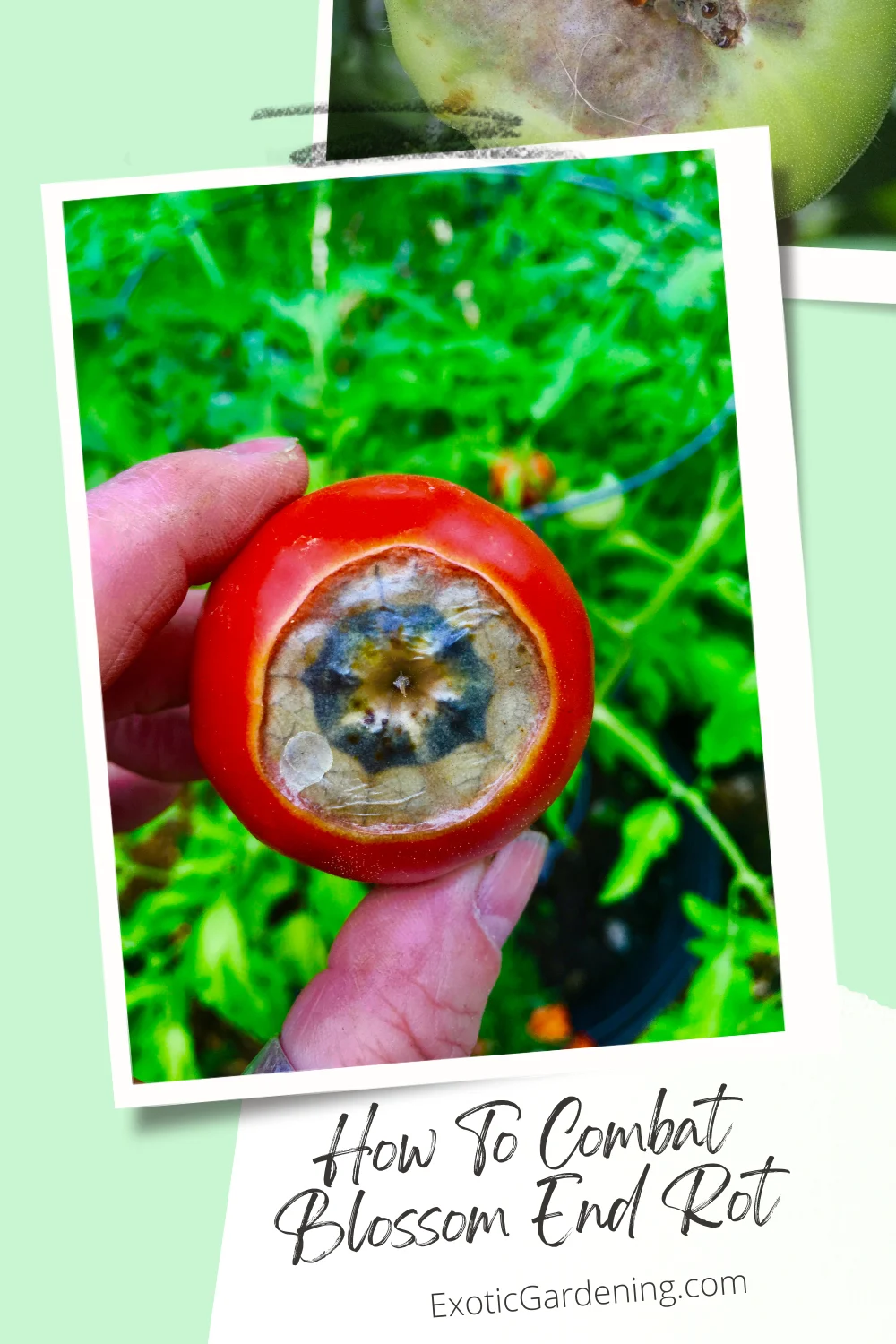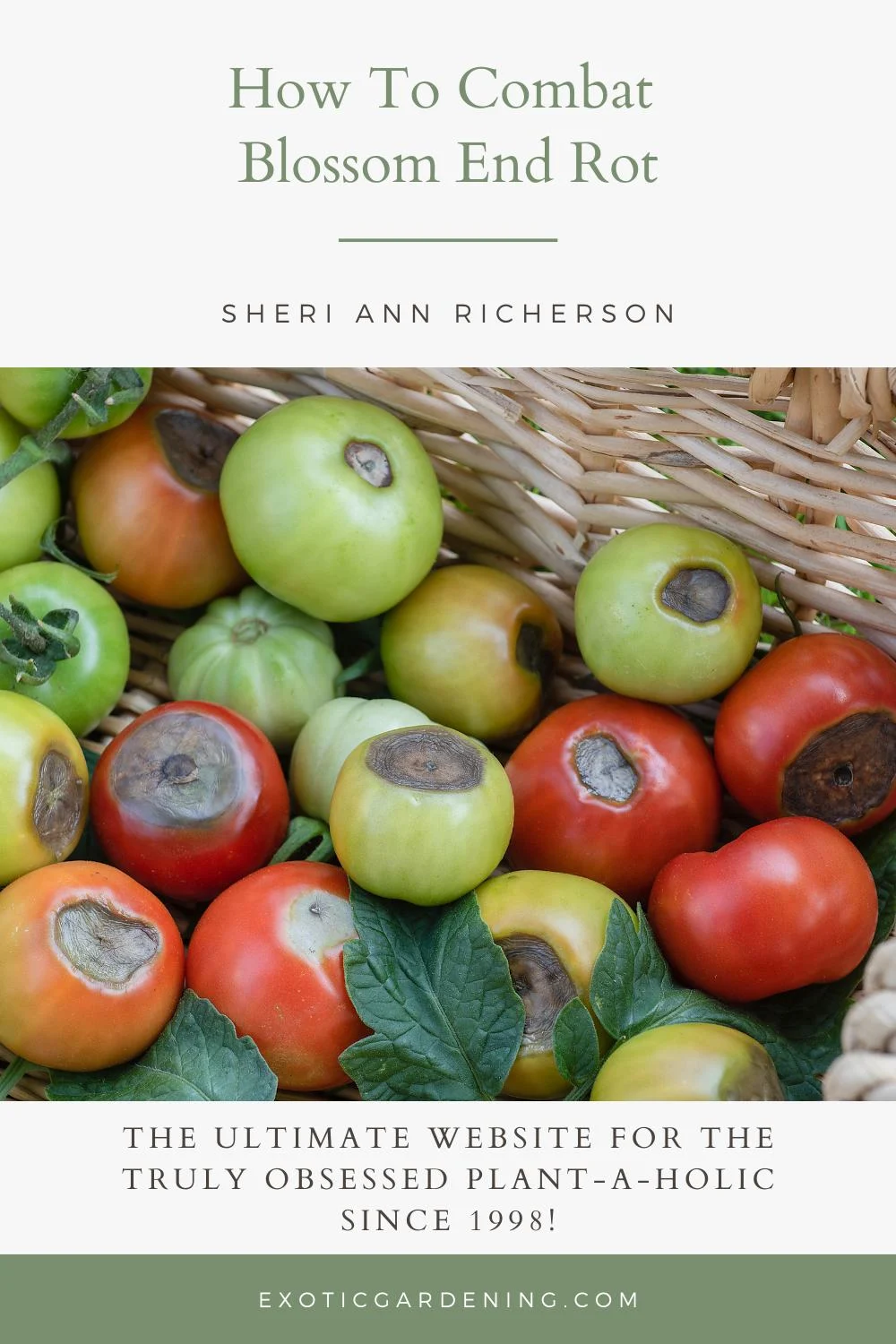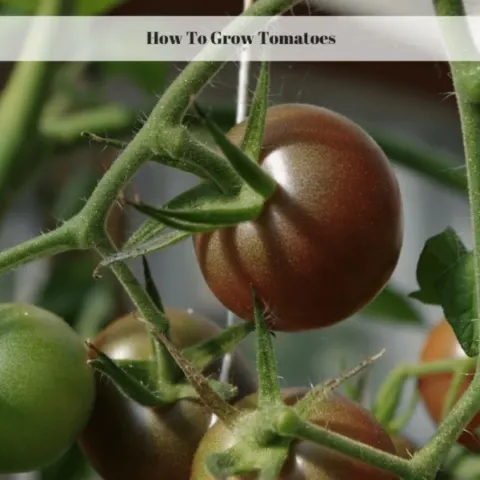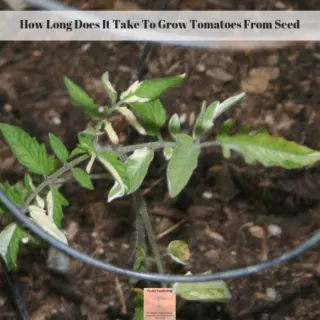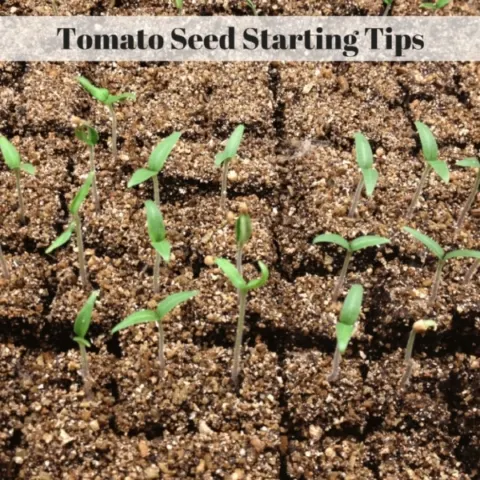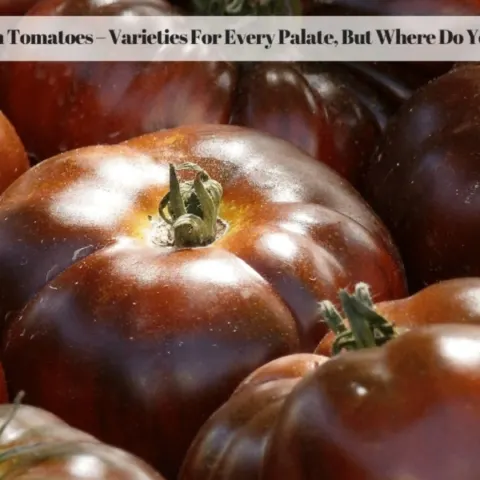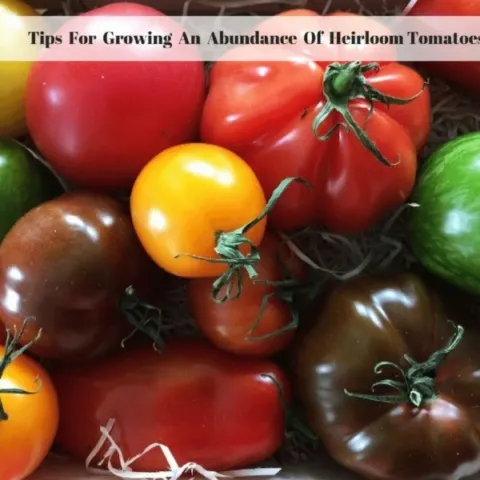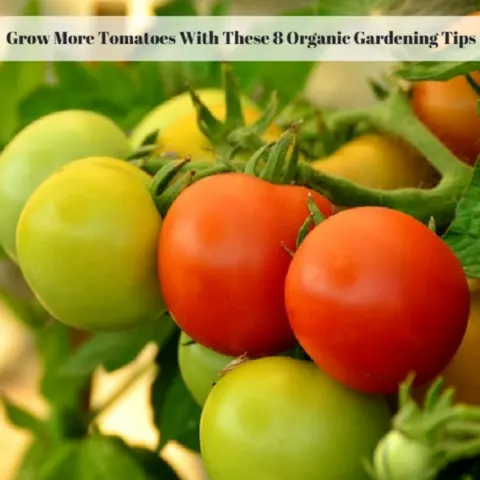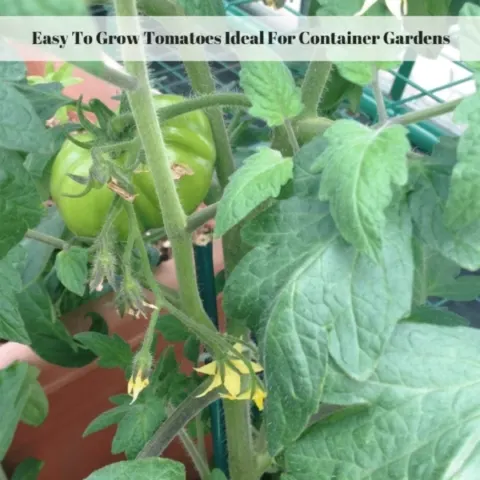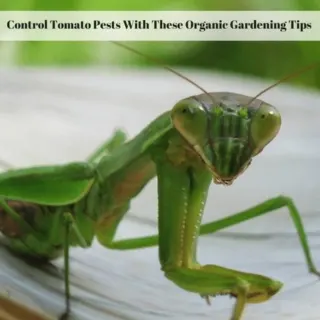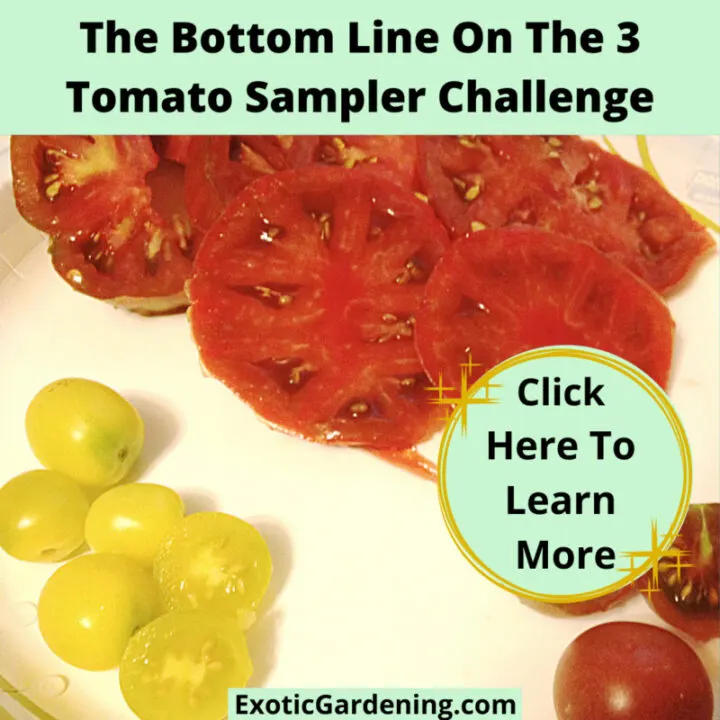Blossom rot, or blossom end rot, is a common problem encountered by tomato gardeners.
Below are some tips to help you recognize and combat blossom end rot in tomatoes.
How To Recognize Blossom End Rot
Blossom end rot is characterized by a dark, rotten spot at the bottom of developing tomatoes.
Blossom end rot first presents itself as a dime or quarter-sized brown or black spot on the end of the tomato opposite the stem.
Unfortunately, you may find this small blossom end rot spot signifies that the tomato is totally rotted out inside.
Fortunately, there are ways to combat blossom end rot before it starts, but once it appears on an individual fruit, there is no way to cure the affected tomato.
Although you can cut away the rotted portion and safely eat the rest as long as the entire tomato is not rotted out inside, it is best to eliminate the problem before it reaches that point.
Unchecked, you can lose a large portion of your entire tomato crop to this condition.
As always, prevention is the best medicine.
The Cause Of Blossom End Rot
What causes blossom rot to start is a deficiency in calcium.
In order for tomato plants to grow their fruit properly, they need an adequate amount of calcium.
Even if you have plenty of calcium in your soil, your plants may not be able to effectively absorb it for a number of reasons.
When this occurs, your plants are at risk of contracting blossom rot.
Therefore, the way to prevent blossom rot is to ensure your plants have access to enough calcium and are able to absorb it appropriately.
Test The Soil pH Before You Plant
Before you plant your tomatoes, be sure to have your soil tested or do it yourself with an inexpensive soil testing kit.
Ideally, your soil should be slightly acidic, with a pH somewhere between 6.0 and 6.8.
If your soil is too acidic, you can add some limestone or lime to increase the pH.
Use caution when adding these amendments, however.
If you add too much, you'll end up with soil that is too alkaline.
If this occurs, or if your soil is naturally alkaline, you can amend it with rich organic matter, elemental sulfur or an acidifying fertilizer, such as ammonium sulfate.
It can be very challenging to lower soil pH, however, because limestone in the ground is continually dissolving.
If you live in an area where alkaline soil is a fact of life, you may want to build raised beds to create a more hospitable growing environment for your plants.
Soil pH is important because if the soil it too alkaline or too acidic the nutrients in the soil won't dissolve easily, thus meaning the plants roots won't be able to take them up.
Adequate Water Is Important
Once your soil is at the optimum pH level, you'll want to ensure your plants are receiving enough water on a consistent basis.
Optimal tomato growth requires regular and deep watering so that water gets all the way down to the entire root system.
Tomatoes won't flourish if you allow them to go dry between watering sessions.
So, be sure your plants receive 1 to 1.5 inches of water per week, but don't go overboard and give them too much.
Fortunately, blossom end rot usually shows up at the very beginning of the season as first fruits appear however it can show up anytime during the growing season.
If you notice your tomatoes are showing possible signs of blossom rot, make sure your plants are watered deeply every 4 to 5 days.
If it is extremely hot in your area, water them more frequently and keep in mind that container grown tomatoes often need watering daily.
To determine when it is time to water your plants, dig down 3 or 4 inches into the soil and see if the soil is moist.
If it is, wait 24 hours and check again.
If the soil at that level is dry, it is time to water.
Mulching the area around the tomato plants with 3 inches of compost is a great way to help keep the soil moist and add nutrients the tomatoes need to thrive.
Fertilize With Kelp
Many tomato gardeners swear by liquid kelp extract or kelp fertilizer as a way to combat blossom end rot.
Kelp is a very nutrient-rich form of seaweed with many useful gardening applications.
The extract and fertilizer are readily available in local garden centers, farm stores, large home improvement stores or via online retailers.
You may want to test it out on part of your garden to see how it works for you.
Although blossom rot can be a challenging garden dilemma, a little preparation and planning will go a long way towards banishing it from your garden.
Growing Tomatoes
How To Grow Tomatoes
Learn how to grow tomatoes and how to plant tomatoes in a garden. Growing great tomatoes is easy if you follow a few simple steps.
How Long Does It Take To Grow Tomatoes From Seed
Learn the real answer to how long does it take to grow tomatoes from seed. Plus learn what factors can affect the germination process.
Tomato Seed Starting Tips
These tomato seed starting tips are sure to have you successfully raising tomatoes from seed. Growing from seed lets you to grow unique, heirloom varieties.
Heirloom Tomatoes – Varieties For Every Palate, But Where Do You Start?
Do you want to grow non gmo tomatoes in your garden? Choose your color and taste preference then grow your own organic heirloom tomato plants.
Tips For Growing An Abundance Of Heirloom Tomatoes
Non gmo tomatoes started from seed at home are the choice for many gardeners. Learn tips for growing great tomatoes in your own garden.
Grow More Tomatoes With These 8 Organic Gardening Tips
Learn how to grow organic tomatoes with these 8 tips. Then grow more tomatoes that are healthy and delicious right in your own backyard!
Easy To Grow Tomatoes Ideal For Container Gardens
Ever wonder how to grow tomatoes in pots outside? Start with these easy to grow tomatoes that perform well when grown in containers indoors or out!
Control Tomato Pests With These Organic Gardening Tips
These organic gardening tips for controlling pests on tomato plants help you identify, control and get rid of the problem without the use of organic pesticides in most cases.
The Bottom Line On The 3 Tomato Sampler Challenge
The tomato sampler challenge shares my thoughts on how three tomatoes taste and how fast they ripen, plus my thoughts on a fourth one.

